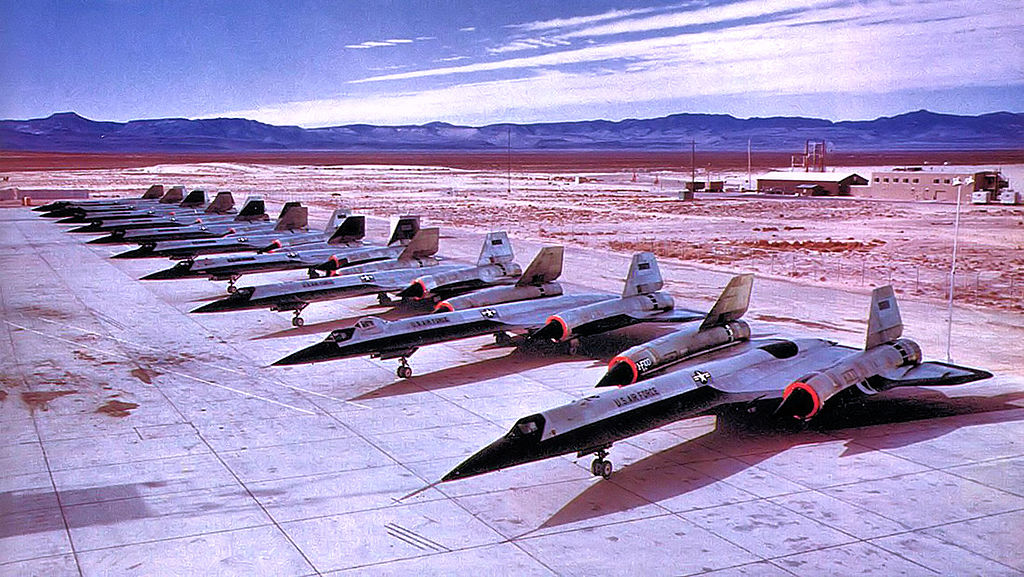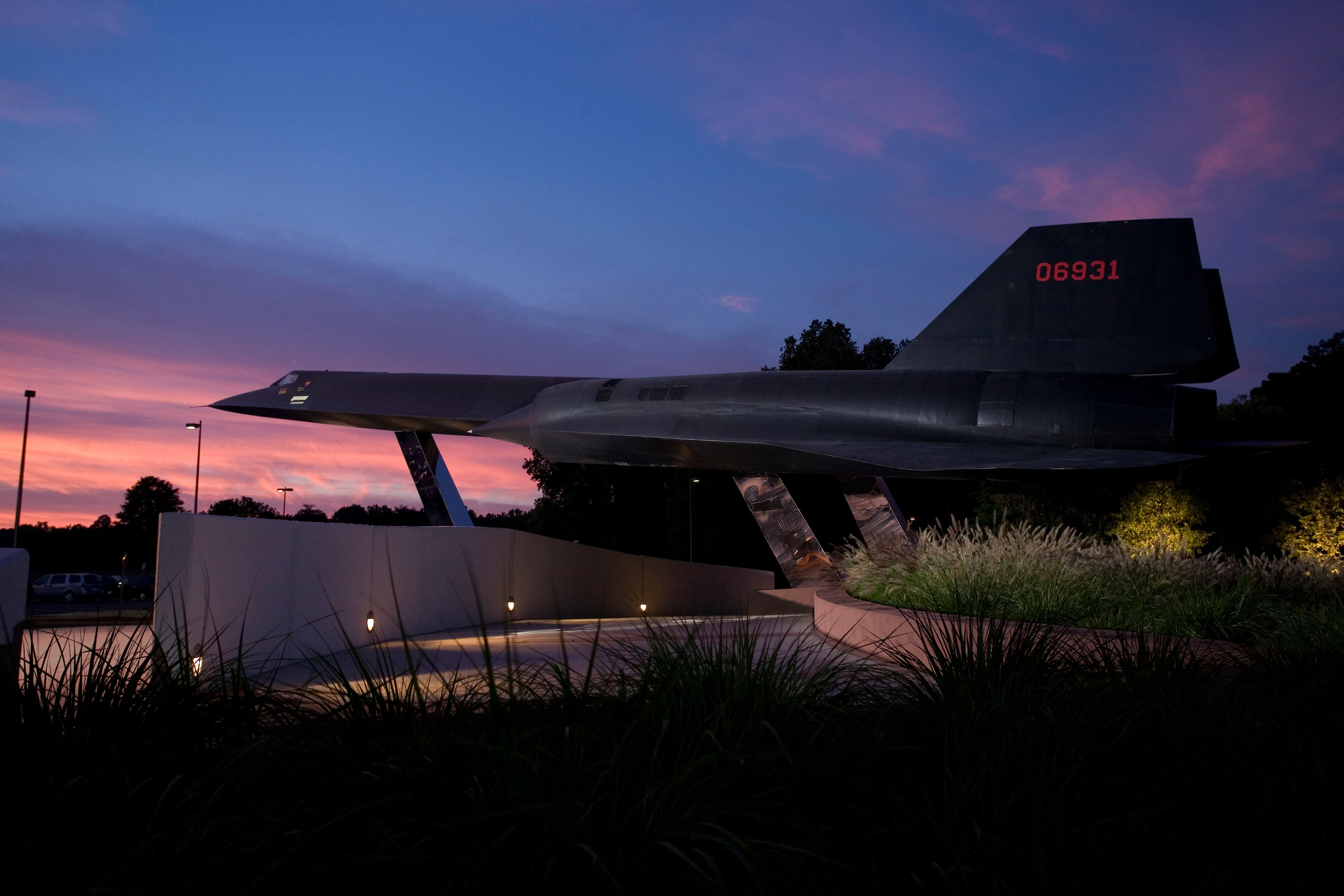“In a matter of seconds, all hell broke out. Without any warning the A-12 pitched up and went into a flat inverted spin,” Ken Collins, A-12 test pilot
Lockheed started developing the A-11, a long-range, high-altitude aircraft, in 1959. It was a Cold War initiative. Clarence “Kelly” Johnson, Lockheed’s Vice President for Advanced Development Projects, was in charge of the project team. The U-2 spy plane was earlier developed under Johnson’s direction. On February 29, 1964, five years after the A-11’s construction began, President Lyndon Johnson told reporters that the aircraft had reached speeds of over 2,000 mph and altitudes of more than 70,000 feet during tests at Edwards Air Force Base (AFB). The aircraft had since been modified to the A-12 Oxcart production version with a reduced radar cross-section.
Three A-12s crashed during the first three years of pre-operational testing, two from mechanical issues and one from a mistake by the ground crew. Every pilot safely ejected. On May 24, 1963, Ken Collins’ A-12 number 926, which was taking part in a test flight for a subsonic engine, crashed 14 miles south of Wendover, Utah. Collins was testing an inertial navigation system when the A-12 pitched up, stalled and entered an inverted spin while in dense cloud cover. Collins noticed inaccurate and perplexing airspeed and altitude readings at this time. He lost control and ejected at a height of about 25, 000 feet while remaining unharmed.
A press cover story identified the crashed plane as a Republic F-105. Following the disaster, the A-12 fleet was briefly grounded while an investigation was carried out. Collins readily took truth serum to aid in his memory’s ability to piece together the puzzle since the need to figure out what went wrong was so great. It was discovered that icing was to blame for the Pitot-static system failure.
In Col. Richard H. Graham’s book The Complete Book of the SR-71 Blackbird: The Illustrated Profile of Every Aircraft, Crew, and Breakthrough of the World’s Fastest Stealth Jet, Ken Collins himself narrates the story of the A-12 number 926 crash.
“As we were having a lot of problems with engine fuel controls during acceleration and cruise, I was scheduled for a flight test mission to perform subsonic engine test runs. Jack Weeks was scheduled as my F-101 chase pilot. The date was 24 May 1963. Takeoff and initial cruise at twenty-five thousand feet were routine. I made the planned right turn to a heading of 180 degrees and climbed to twenty-seven thousand feet to stay out of the building cloud formations. During these missions, the chase plane was to stay close enough to observe the engine nacelles and afterburner area, but far enough away to maintain safe flight. The F-101 had a historical pitch-up problem if it got too slow in flight. As we continued south in the Wendover Danger Area (northwest of the Great Salt Lake) I entered an area of heavy cumulus cloud formations. My chase moved into keeping visual contact.
“Minutes later, Jack signed that we were getting too slow for the F-101. All my A-12 instruments (airspeed, altitude) were giving normal indications. Jack signaled that he could not stay with me. I waved him off, and he cleared to my right and disappeared into the clouds.
“I dedicated my efforts to determine what the real problems were. I engaged the autopilot and reviewed all of the instruments and systems. There were no observable failures or abnormal indications. I then disengaged the autopilot, maintaining my planned airspeed and thirty thousand feet altitude.
“In a matter of seconds, all hell broke out. Without any noticeable change in aircraft attitude or speed, the altimeter was rapidly “unwinding,” indicating a rapid loss of altitude. The airspeed indicator was also unwinding, displaying a rapid loss of airspeed. In heavy clouds, with no visual references, and with what felt like a solid platform under me, I advanced the throttle, attempting to stop the indicated loss of airspeed, but with no apparent results. At this point, I could not assume that any of the flight or engine instruments were providing correct data. And I was right! Without any warning, the A-12 pitched up and went into a flat inverted spin.

“Realizing that I had no effective controls that the aircraft was unrecoverable from the flat, inverted spin, and that I had no true indication of my actual altitude, it was time to eject. I could have been much lower and over high mountains, which would put me dangerously close to the ground or hilltops. I closed my helmet visor, grabbed the ejection D-ring between my legs, firmly pushed my head back against the ejection seat headrest, and pulled the D-ring. The aircraft canopy flew off instantly, the boot stirrups snapped back into the seat retainers, and the ejection seat rocket shot me downward (remember, I was inverted!) and away from the aircraft.
“During my descent, I saw the A-12 spiraling toward the ground and then a large black column of smoke and flames behind a hill. I had time to look around. I saw a road to the right and a lot of rough terrains covered with rocks and sage. When I landed, I immediately released the riser safety clips and collapsed the parachute. I was in the middle of a hilly desert with little prospect of being rescued any time soon. My chase plane (Jack Weeks) didn’t know where I was, and because of the program’s tight security, we didn’t maintain radio contact with the base operations.
“I began collecting all of the flight checklist pages, which broke loose during ejection, and any other aircraft items lying around. Much to my amazement, I saw a pickup truck bouncing across the rocks coming towards me with three men in the cab. When they stopped, I saw they had my aircraft cockpit canopy in the truck bed. They asked me if I wanted a ride. They said that they would take me over to my airplane. I told them that it was an F-105 fighter with a nuclear weapon on board. They got very nervous and said that I was going with them to get in quickly because they were not staying around here.
“There were four of us in that cab. I asked them to drop me off at the nearest highway patrol office, which was in Wendover, Utah. I thanked them and that was the last I saw of them. I made my “secret” phone call. A Lockheed Constellation loaded with security and aircraft engineers arrived in less than two hours. Kelly Johnson’s jet arrived after the “Connie” to pick me up. Our flight surgeon and I flew directly to Albuquerque, New Mexico, to the Lovelace Clinic for my physical checkup.
“An intense accident investigation was conducted. I was submitted to sodium pentothal “truth serum” to confirm my statements relating to the flight and accident. The person who solved the true technical cause of the accident was Norm Nelson. Norm was a dedicated government engineer and fine, caring man, who became vice president of Skunk Works. As always, the initial belief is that there was a pilot error. Fortunately, the real causes of the accident were discovered and later corrected. It turned out to be an inadequate Pitot tube (thus the Rosemont Probe we now have) and failed air data computer.”

Photo by U.S. Air Force and Central Intelligence Agency

